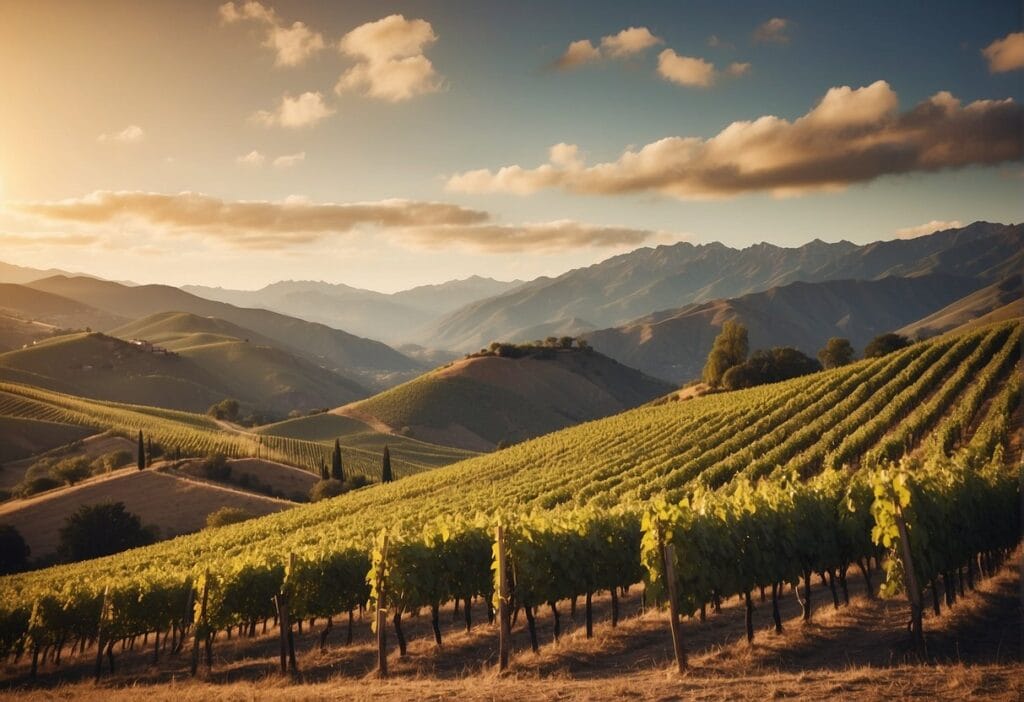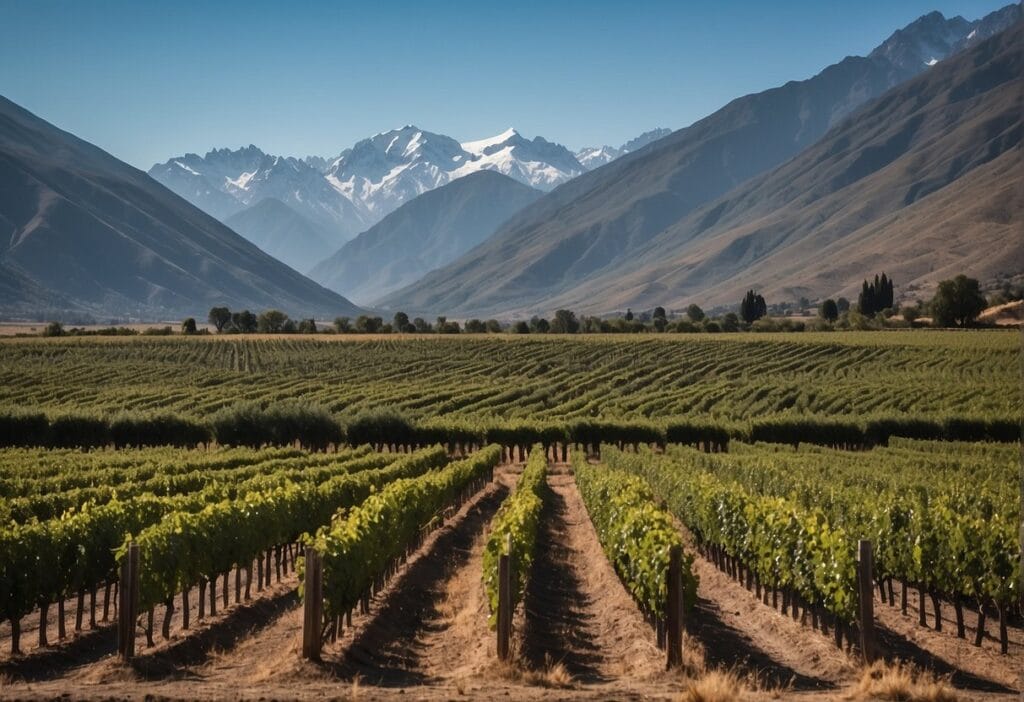Nestled in the heart of the Rhaetian Alps, the Valtellina wine region is a picturesque area known for its exquisite wines and breathtaking landscapes. This strip of land in the Lombardy region of northern Italy, close to the border with Switzerland, boasts a winemaking heritage that dates back over two millennia. Today, it’s recognized for its unique versions of the Nebbiolo grape, locally known as Chiavennasca, that thrive in its terraced vineyards.
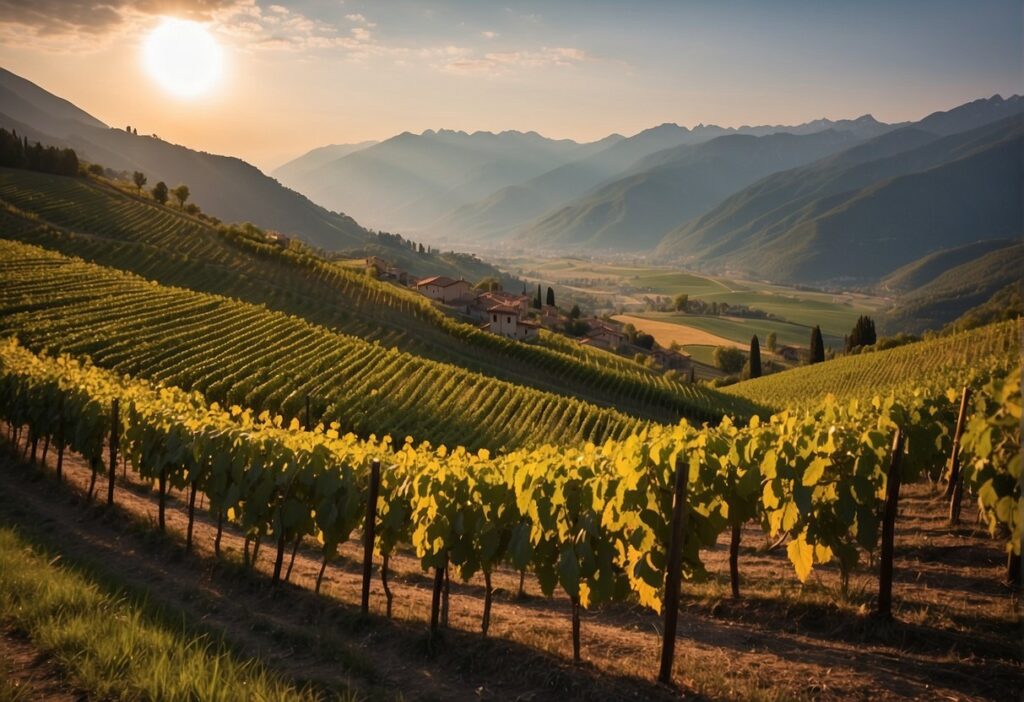
While the snow-capped peaks and the serpentine Adda river define the region’s stunning geography, they also create a distinct terroir that is essential to the character of Valtellina’s wines. The alpine climate and steep slopes demand a lot from both vines and vintners, but the results are red wines renowned for their finesse and aging potential. This is a region steeped in tradition, yet constantly innovating to elevate its wines on the world stage.
Key Takeaways
- Valtellina is a historic northern Italian wine region famous for its Nebbiolo wines.
- Its unique alpine terroir contributes to the distinctive qualities of the wines produced here.
- The region is marked by tradition, yet embraces innovation to enhance its viticulture.
History and Culture of Valtellina
Discover how the Valtellina wine region is steeped in a rich tapestry of history that intertwines with the broader narratives of culture and governance in Lombardy. From the enigmatic imprints of the Ancient Ligurians and Etruscans, the influences of great leaders like Charlemagne, to significant changes during the Congress of Vienna, you’ll find that Valtellina’s past is as complex as its finely aged wines.
Early Inhabitants and Historical Timeline
Your journey through Valtellina’s past starts with its early inhabitants, the Ancient Ligurians and Etruscans, whose presence laid the initial cultural foundations. By the time Rome extended its influence, Valtellina already had a patchwork of cultures. The Lombards later settled in the area, leaving a significant impact that echoes in the region’s name, deriving from ‘Valley of the Lombards’.
Influence of Charlemagne and Subsequent Rulers
Moving forward through history, the towering figure of Charlemagne, along with the succession of German and Austrian dominions, wielded considerable influence over the cultural and viticultural practices of Valtellina. The hand of Charlemagne is a byword for the blossoming of viticulture, fostering a period of agricultural and economic prosperity for the wine regions of Lombardy.
Valtellina Through the Ages: From Rome to the Kingdom of Italy
In the fullness of time, Valtellina echoed the tumults and turns of Italian history. After surviving the fluctuations of control from Rome’s fall to the Congress of Vienna, the area was integrated into the Austrian Empire. Ultimately, it joined the radiant tapestry of the Kingdom of Italy.
The influence of Italian renaissance figures such as Leonardo da Vinci, who mentioned Valtellina in his Codex Atlanticus, shows the region’s longstanding impact on culture. Sondrio, the heart of Valtellina, experienced cultural blossoming along with the rest of Lombardy, becoming known for its unique contributions to the broader Italian heritage.
Geography and Terroir
Valtellina, set in the heart of the Rhaetian Alps in Northern Italy, flaunts a unique terroir shaped by its mountainous terrain and the Adda River. Here’s a glimpse into the profound impact of its geography on Valtellina wine.
The Rhaetian Alps and Local Climate
Nestled within the grandeur of the Rhaetian Alps, Valtellina benefits from a climate that’s perfect for viticulture. The high altitudes, specifically around Monte Disgrazia, lead to a diurnal temperature variation which promotes the perfect balance of ripeness and acidity in the grapes. These conditions are complemented by the warm winds of the Alps, yielding wines with depth and character.
Alluvial Soils and Vineyard Topography
The alluvial soils along the slopes of Valtellina add a deep complexity to its wines. You’ll find vineyards positioned on stone walls, crafting an intricate vineyard topography. The presence of silica in the soil, together with the drainage provided by the alluvial nature, is key in creating the robust yet refined Alpi Retiche IGT.
Proximity to Lake Como and Milan
Valtellina’s allure doesn’t stop at the Alps — its proximity to both Lake Como and Milan enhances the region’s terroir. The lake’s influence moderates the temperatures, minimizing the risk of vine stress, while its location near the cultural hub of Milan makes it accessible, drawing visitors and connoisseurs alike who are eager to explore its vine-clad hills and south-facing slopes bordering Switzerland.
Valtellina’s Winemaking Traditions
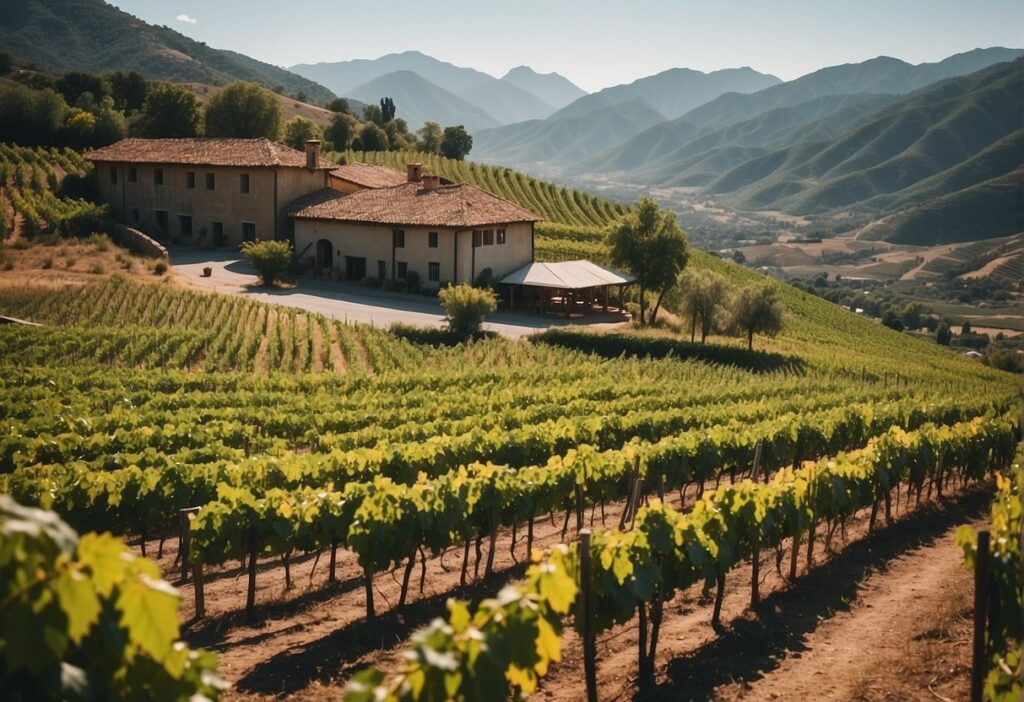
In the terraced vineyards of Valtellina, nestled in the Lombardy region, winemaking is an art perfected over centuries. Here, you’ll discover the harmony between traditional viticulture and the eminent Nebbiolo grape, known locally as Chiavennasca, shaping the distinct red wines of this picturesque Italian enclave.
Viticulture: From Planting to Harvest
Embedded within the heart of the Alps, Valtellina’s vineyards are cultivated on steep slopes, presenting unique challenges and contributing to the wines’ distinct character. Viticulture here involves meticulous terrace farming, where maintaining vines and soil—often done by hand—is crucial to safeguard against fungal diseases and the elements. Harvesting grapes in Valtellina is a labor of love, requiring careful timing to ensure the Nebbiolo grapes achieve their full expressive potential.
Nebbiolo Grape: The Heart of Valtellina Wines
In Valtellina, the Nebbiolo grape, or Chiavennasca, is the linchpin of the region’s red wine production. This grape variety demands patience and nurturance but rewards with elegant and aromatic red wines. Expressing a distinct spectrum of flavors and characteristics, Nebbiolo from Valtellina carries the prestige of both DOC and DOCG classifications, including the notable Valtellina Superiore and Sforzato di Valtellina, a wine produced in a similar style to Amarone.
Unique Winemaking Techniques and Styles
Wines like Sforzato di Valtellina are emblematic of the region’s unique winemaking techniques. This style involves a passito process, where grapes are dried before fermentation, intensifying flavors and creating a rich, concentrated red wine experience. Beyond Sforzato, other styles such as Rosso di Valtellina showcase the impressive versatility of the Nebbiolo grape in producing approachable yet complex wines, beloved both locally and internationally.
Exploring the Local Delicacies
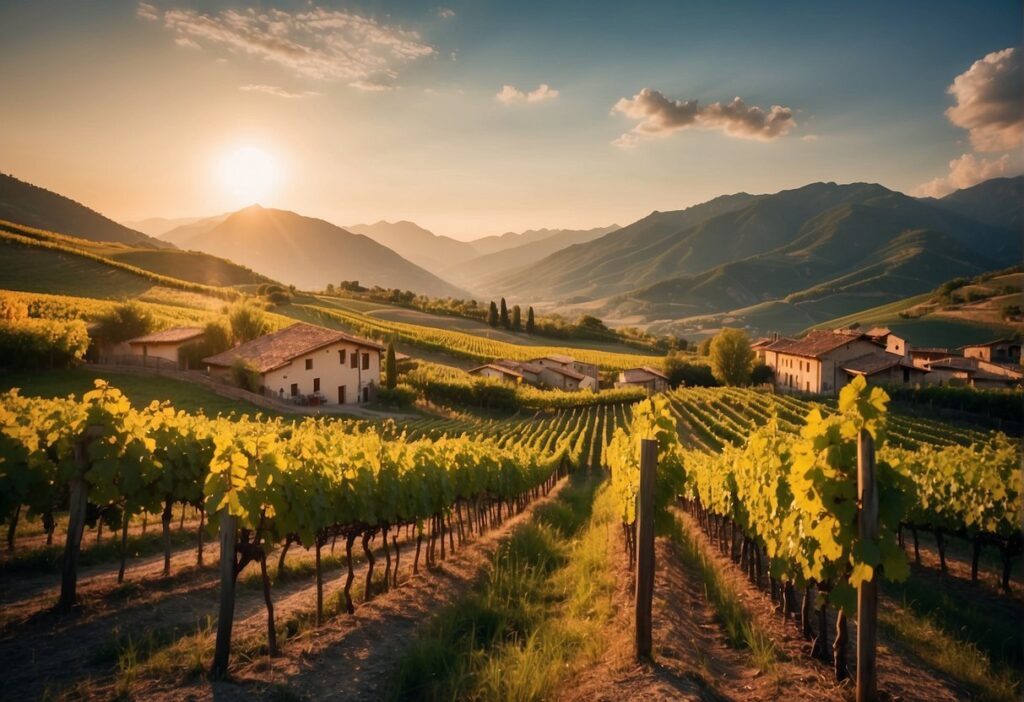
When you visit Valtellina, embracing the rich local cuisine is as important as enjoying its scenic beauty. The region offers a delectable blend of Italian and Lombard traditions that will undoubtedly tantalize your taste buds.
Pairing Wine with Valtellina’s Gastronomy
Valtellina is synonymous with red wines primarily made from the Nebbiolo grape, locally called Chiavennasca. These wines display unique characteristics influenced by the region’s terroir. When dining at local restaurants, you’re likely to be advised to pair a robust Valtellina Superiore with the hearty local cuisine.
The bold red wines complement the area’s rich and savory dishes, elevating your dining experience to a whole new level. A prime example is bresaola, a seasoned and air-dried beef that originates from the region. Pair it with a glass of Valtellina Superiore to enjoy a truly Lombard delicacy.
Local Products and Specialties
Valtellina’s culinary culture showcases an array of local products unique to this mountainous region near the Swiss border. Here’s a list highlighting some must-try specialties:
- Bresaola: This lean cured beef is a staple in Valtellina’s cuisine, best enjoyed thinly sliced with a drizzle of olive oil.
- Pizzoccheri: An Italian pasta made with buckwheat flour, often served with cheese, butter, and greens.
- Bitto cheese: A rare cheese that can be aged for years, developing a complex flavor profile.
Do not miss a visit to Morbegno or Bormio where you can experience the heart of Valtellina’s hospitality and taste these specialties first-hand. Small towns like Maroggia not only boast these delightful foods but are also home to lesser-known wines of Valtellina, such as Maroggia’s Silica infused wines, offering a unique tasting experience.
Tourism and Hospitality
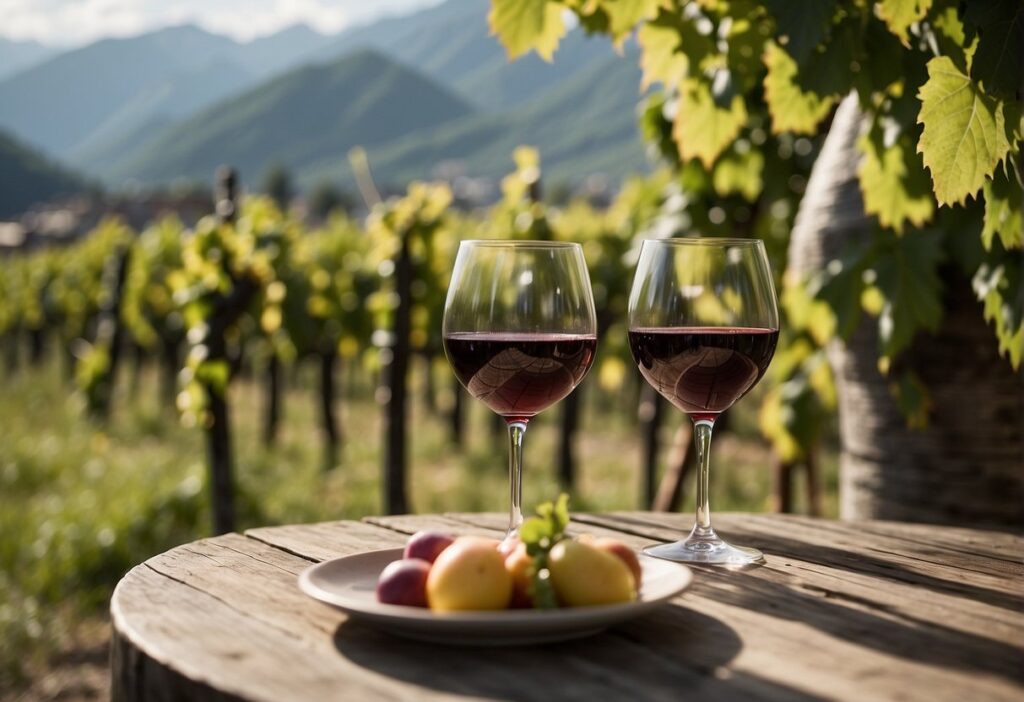
Valtellina, located in the heart of the Lombardy region, is a top destination for lovers of fine wine and breathtaking landscapes. You’ll experience warm hospitality and have the opportunity to explore unique activities that this Italian jewel has to offer.
Activities for Visitors
When you visit Valtellina, embrace a world of adventures and cultural experiences. Engage in wine tours that showcase the richness of local viticulture by visiting some of the best wineries in Valtellina. Treat your palate to the famed Nebbiolo wines, and don’t miss out on the variety of wine tastings and tours the region boasts.
Apart from the wine-centric activities, Valtellina offers a chance to immerse yourself in natural beauty with activities like hiking, skiing in Bormio, or cycling through charming paths that connect the small towns along the valley. Close to the Swiss border, the region’s dramatic landscape provides a picturesque setting for all your adventures.
Accommodations and Local Amenities
Finding a place to stay in Valtellina matches the charm that the region exudes. From quaint bed and breakfasts to luxurious hotels, your stay will be as memorable as the scenery. Especially in towns like Sondrio and Bormio, you can expect accommodations that blend comfort with the traditional alpine aesthetic.
| Town | Accommodation Options | Notable Amenities |
|---|---|---|
| Sondrio | Boutique hotels, B&Bs | Close to vineyards, historical sites |
| Bormio | Spa resorts, family-run guesthouses | Ski facilities, thermal baths |
For dining, indulge in the local cuisine at family-owned restaurants that offer hearty dishes. Pair your meals with a glass of Valtellina wine for a truly authentic experience. With Milan being just a train ride away, you can combine your tranquil retreat with the hustle and bustle of city life if you wish. Valtellina’s blend of hospitality and Italian charm ensures your visit will be nothing short of extraordinary.
Valtellina Wine Classification
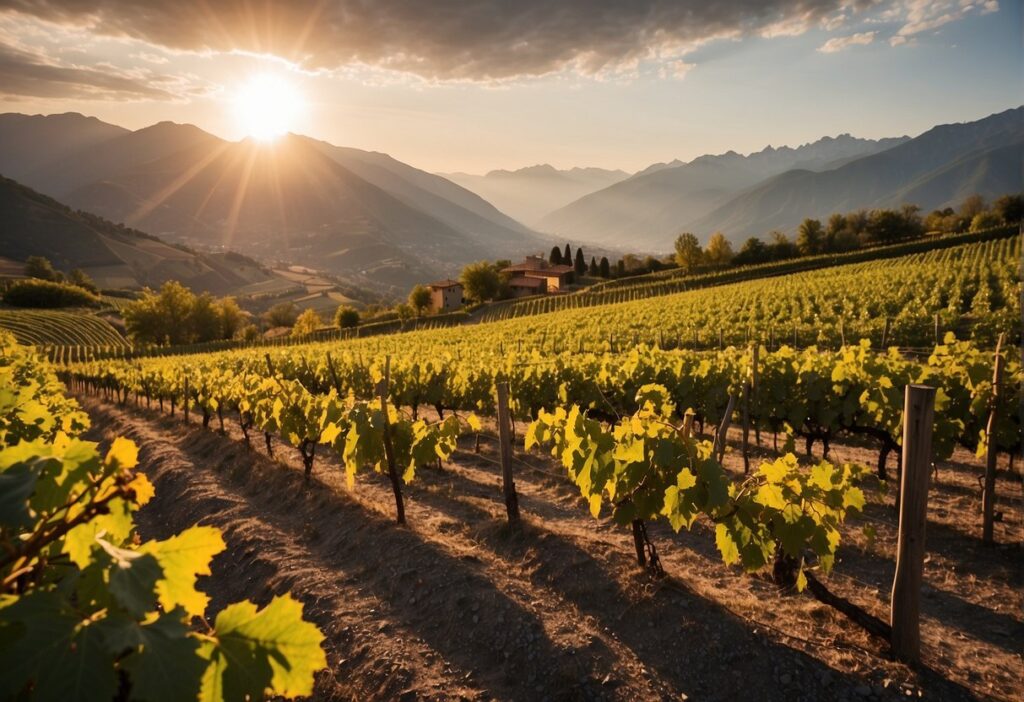
As you delve into the world of Valtellina wines, understanding the classification system is vital. It ensures you’re savoring wines that meet stringent standards and reflect the region’s unique terroir.
Understanding DOC and DOCG Labels
When you encounter a bottle from Valtellina, you’re likely to see the terms DOC (Denominazione di Origine Controllata) and DOCG (Denominazione di Origine Controllata e Garantita). These labels are key indicators of quality and tradition. The DOC designation means the wine meets defined standards of production and origin, while the DOCG label denotes the highest quality, with stricter regulations and guaranteed geographical authenticity.
Valtellina Superiore DOCG represents the pinnacle of Valtellina’s offerings, requiring Nebbiolo (locally known as Chiavennasca) grapes, aging for 24 months, and adherence to rigorous standards. The Sforzato di Valtellina DOCG, a unique, intense wine made by the passito method of drying grapes (akin to Amarone), also commands respect for its robust flavor and historical roots.
Notable Wine Designations in Valtellina
In Valtellina’s varietal landscape, two designations stand out:
- Valtellina Superiore DOCG: encompasses five sub-zones—Maroggia, Sassella, Grumello, Inferno, and Valgella. Each offers a distinct expression of Nebbiolo, shaped by altitude and microclimate. Look for wines labeled with these areas for a taste of the region’s diverse palette.
- Sforzato di Valtellina DOCG: Known locally as Sfursat, this powerful wine emerges from a process similar to Amarone, with grapes dried until December post-harvest, enhancing sugar and flavor concentration. It’s a wine of extraordinary character, offering a bold, rich experience.
In your exploration, you might also encounter the Alpi Retiche IGT, used by many producers for wines from international varieties or those that don’t fit the strict DOC/DOCG criteria. Varietals like Rossola, Pignola, and Rossola Nera often fall under this broader designation.
Navigating through Valtellina’s wine classification enlivens your understanding of Italian winemaking traditions and the meticulous care Valtellina producers pour into every bottle. Whether you’re reaching for a Valtellina Superiore or a Sforzato, you’ll appreciate the depths of flavor and history in your glass.
Frequently Asked Questions
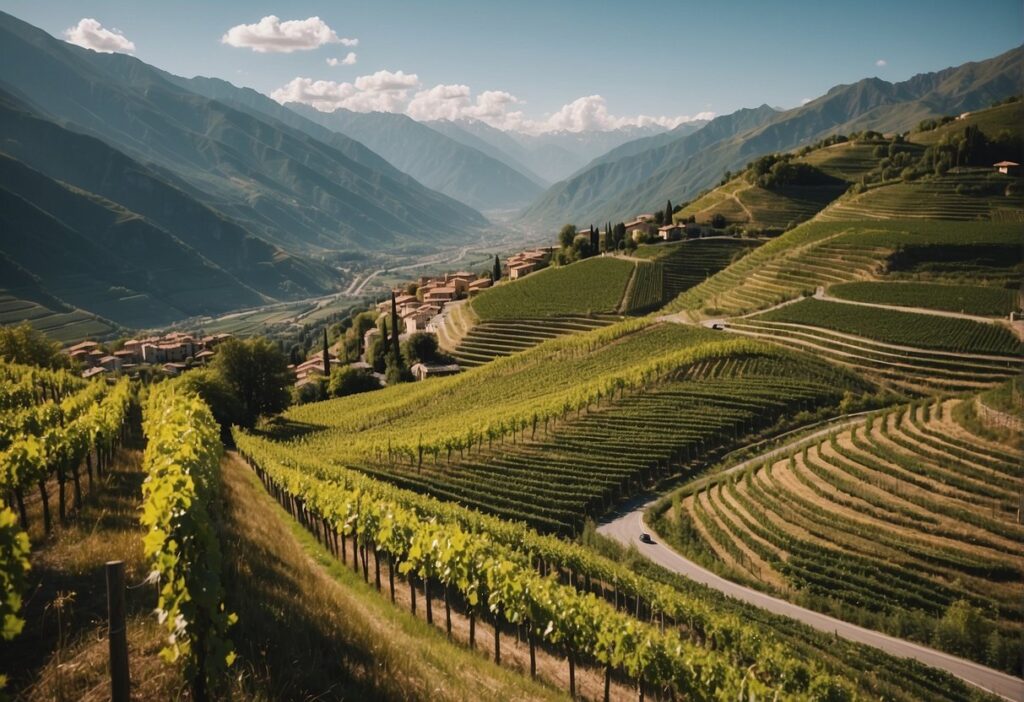
Dive into the essence of Valtellina wine region with these focused answers to commonly asked queries.
What are the notable features of the Valtellina Superiore wine?
The Valtellina Superiore wine is lauded for its complex flavors and aging potential, characterized largely by its mandatory 90% Nebbiolo composition. This wine must meet rigorous aging requirements before release, enhancing its quality.
Can you recommend the best wineries to visit in Valtellina?
For an authentic Valtellina experience, visiting renowned wineries like Casa Vinicola Pietro Nera or Azienda Agricola Caven will give you a taste of high-quality local wines while enjoying the picturesque Alpine backdrop.
What’s the historical background of winemaking in Valtellina?
Winemaking in Valtellina traces back over 2,000 years, with a longstanding tradition of producing wine in this alpine valley. The region’s heritage is deeply intertwined with the cultivation of the Nebbiolo grape.
Which varieties of grapes are predominantly grown in Valtellina?
While Nebbiolo, locally known as Chiavennasca, is the star of Valtellina, the region also supports other varieties such as Brugnola, though these are less prevalent.
How does the Valtellina wine region differ from other Lombardy wine regions?
Valtellina stands out from other Lombardy wine regions due to its unique terraced vineyards carved into the mountainous landscape, creating a distinct terroir that influences the flavor profile of its wines.
What are some must-try Valtellina wines for beginners?
Begin your Valtellina wine journey with selections like the approachable Rosso di Valtellina DOC, known for its earlier release and lighter aging requirements, making it a perfect starting point for newcomers.
